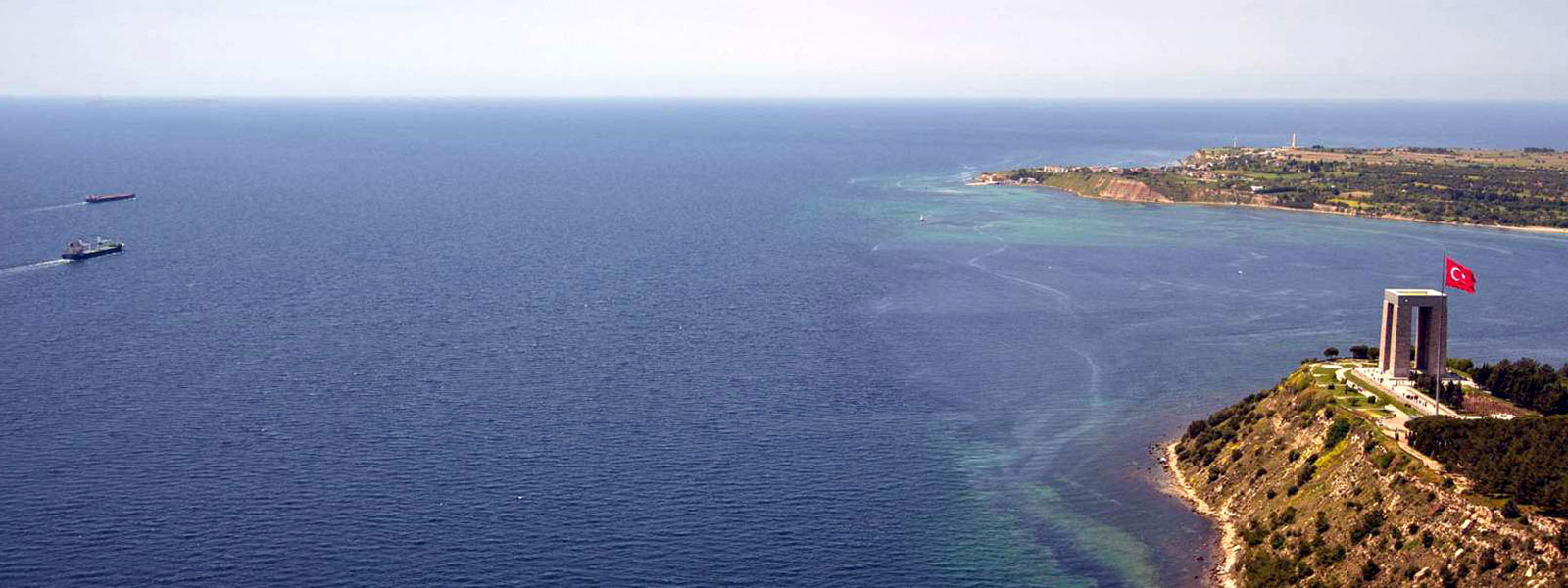
CANAKKALE
Canakkale is not the keystone for only Anatolia, but also for Asia and Europe harboring principal ancient cities like Troy and Assos in Turkey. It is not a coincidence that these lands which have been pupils of Aristotle, the pioneer of modern-day thinking, have accommodated more than 30 ancient cities. The name of the city means “the pot Fortress” comes from a castle akin to a pot, built in the 15th century by Mehmet the Conqueror. The city is on one of the crossing paths to Europe used by the Ottomans who were primarily interested in Balkans. It houses the largest Lodge of Mevlevi in the world (Lodge of Whirling Dervishes). In 2008, UNESCO confirmed the Mevlevi Sema Ceremony as being one of the “Masterpieces of the Oral and Intangible Heritage of Humanity.” (Sema: Sama: the Sufi Ceremony) The Archaeological Museum houses the findings from the Dardanos Tumulus and Tenedos in Bozcaada (Tenedos Island).
Canakkale Strait & Gelibolu Peninsula
Canakkale Strait is one of the two important water bodies that separate Asia from Europe, other one being the Bosphorus in Istanbul, and gets its name from the ancestor of Trojans, Dardanos. The 60 km. long strait is the only entrance from Aegean to Sea of Marmara and subsequently to the Black Sea. Gelibolu Peninsula is the land across the strait on the European, aka Thracian side of Turkey. Legendary Troy is on the Asian side of the Dardanelles, close to the entrance of the strait. It is accounted that Xerxes I of Persia visited Troy in 480 BC and sacrificed a thousand cattle at Temple of Athena. He crossed the strait by setting a pontoon bridge from his ships before marching on to Greece. Likewise, Alexander the Great visited Troy on crossing to Asia and donated his shield to the Temple of Athena after visiting the tomb of Achilles in 334 BC. The territory in Homer's Iliad which is regarded as the beginning of Western Literature has witnessed another critical war after thousands of years proving that this strategical waterway has not lost its crucial importance with time.
Allied Powers forced Dardanelles with an immense joint navy in 1915 intending to open a supply route to Russia by occupying Istanbul and thus gaining control of Dardanelles and Bosphorus by eliminating Ottomans but ended up having to land troops in Gelibolu when they understood it was impossible to cross the strait. Heavy casualties on both sides in land and sea battles in WW I have compelled the Allied Powers to retreat in the end. Mustafa Kemal Ataturk, then a young lieutenant colonel in Ottoman Army, received the attention of the whole world with his success against Dardanelles Campaign and started his peerless career heading for the inevitable destiny that would make him the founder of Turkish Republic. Gallipoli Battles made a tragic war turn into an unprecedented social and cultural event with memories and feelings documented in the numerous letters, poems, drawings and diaries in the fronts and the unexpected friendships established with the adversaries. Canakkale and Gelibolu Battle Zones in the WW I are accepted as among the most important locations to affect the history of the world and they are covered in UNESCO World Heritage Tentative List in 2014.
Every year two commemorations are held in Canakkale and Gallipoli Peninsula to honor those who have lost their lives in the wars; Victory Day, March 18th and April 25th is the ANZAC Day when one can encounter thousands of Australians and New Zealanders who have come to attend the commemorations.
